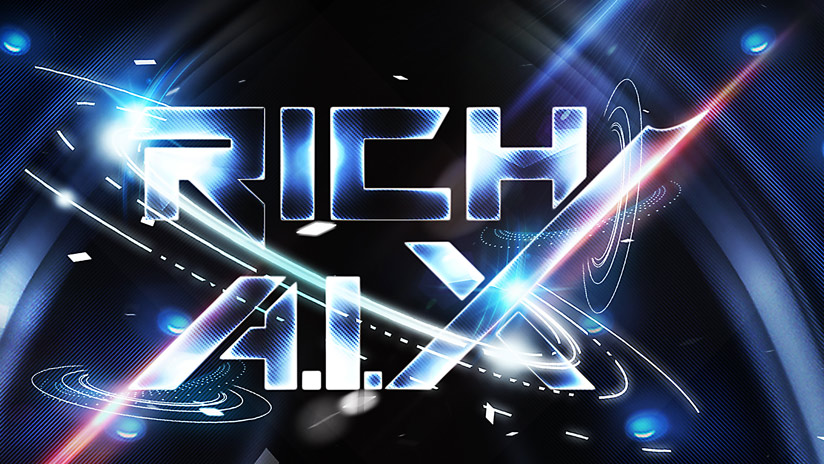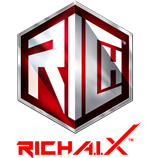AI in HR: Navigating the Evolution from Workforce Management to Human-Machine Orchestration
In this video, we explore how AI is transforming Human Resources from a traditional workforce manager into a strategic orchestrator of human-machine collaboration. Discover the evolution of HR through two key perspectives: IBM’s efficiency-driven model and Cyberwisdom’s visionary Human-Machine Capital (HMC) framework.
Learn how AI is not just automating tasks but redefining the structure of work itself. From hybrid teams to new performance metrics like HMC Density, this video gives HR leaders practical insights on how to lead the AI transformation in their organizations.
Whether you're an HRBP, talent strategist, or business leader, this video will help you understand how to future-proof your workforce and unlock the full potential of human-machine collaboration.
Visit our website to read more: www.cyberwisdom.net
Contact us: sales@cyberwisdom.com.hk
#Cyberwisdom #EnterpriseAI #HMC #HumanMachineCapital #LyndonAI
Script:
What if the future of work isn't about replacing humans with machines, but creating powerful human-machine teams that outperform either alone?
Welcome to the new era of HR—where artificial intelligence isn't just a tool, but a strategic partner in redefining how we work. This is the world of Human-Machine Capital (HMC), a revolutionary concept introduced by Cyberwisdom that’s reshaping the role of human resources.
Gone are the days when HR was simply about managing people. Today, HR is evolving into a strategic architect—designing how humans and machines work together, ensuring that both thrive in a collaborative, intelligent organization.
So how is AI transforming HR from a workforce manager into a human-machine orchestrator?
Let’s break it down.
First, we look at IBM’s perspective, which focuses on using AI to make HR more efficient. AI automates repetitive tasks like resume screening, payroll, and employee FAQs—freeing up HR to focus on strategy. It also helps HR make smarter decisions using data—like predicting turnover or identifying skill gaps. But IBM’s view is more about optimizing current processes, not redefining the structure of work itself.
Now, enter Cyberwisdom’s HMC model—a bold vision where AI isn’t just a tool, but a collaborative partner. Here, HR doesn’t just manage people or AI systems—it designs hybrid teams where humans and machines work together, each doing what they do best.
Imagine a recruitment team where AI handles resume parsing and initial screening, while human recruiters assess cultural fit and build relationships. Or a training program where AI delivers personalized microlearning, and L&D experts lead immersive, human-led experiences. This is the power of intentional collaboration.
Cyberwisdom introduces a new metric called HMC Density—a measure of how effectively humans and machines work together. Instead of focusing on cost per employee or headcount, this metric looks at synergistic output, showing how AI can amplify human performance.
In this model, HR becomes the strategic architect of the future of work. That means designing hybrid workflows, building AI literacy across teams, and setting ethical standards for AI use. It’s not just about adopting technology—it’s about leading the transformation.
So what should HR leaders do now?
Start small—pilot hybrid teams in areas like recruitment or onboarding. Upskill your HR team with AI basics and ethical governance. And most importantly, advocate for HMC at the leadership level using real-world metrics and success stories.
The future of HR isn’t about choosing between humans and machines. It’s about orchestrating the best of both worlds.
And for those ready to lead this shift, the rewards are clear: a future-ready, agile, and high-performing organization.
In this video, we explore how AI is transforming Human Resources from a traditional workforce manager into a strategic orchestrator of human-machine collaboration. Discover the evolution of HR through two key perspectives: IBM’s efficiency-driven model and Cyberwisdom’s visionary Human-Machine Capital (HMC) framework.
Learn how AI is not just automating tasks but redefining the structure of work itself. From hybrid teams to new performance metrics like HMC Density, this video gives HR leaders practical insights on how to lead the AI transformation in their organizations.
Whether you’re an HRBP, talent strategist, or business leader, this video will help you understand how to future-proof your workforce and unlock the full potential of human-machine collaboration.
Visit our website to read more: www.cyberwisdom.net
Contact us: sales@cyberwisdom.com.hk
#Cyberwisdom #EnterpriseAI #HMC #HumanMachineCapital #LyndonAI
Script:
What if the future of work isn’t about replacing humans with machines, but creating powerful human-machine teams that outperform either alone?
Welcome to the new era of HR—where artificial intelligence isn’t just a tool, but a strategic partner in redefining how we work. This is the world of Human-Machine Capital (HMC), a revolutionary concept introduced by Cyberwisdom that’s reshaping the role of human resources.
Gone are the days when HR was simply about managing people. Today, HR is evolving into a strategic architect—designing how humans and machines work together, ensuring that both thrive in a collaborative, intelligent organization.
So how is AI transforming HR from a workforce manager into a human-machine orchestrator?
Let’s break it down.
First, we look at IBM’s perspective, which focuses on using AI to make HR more efficient. AI automates repetitive tasks like resume screening, payroll, and employee FAQs—freeing up HR to focus on strategy. It also helps HR make smarter decisions using data—like predicting turnover or identifying skill gaps. But IBM’s view is more about optimizing current processes, not redefining the structure of work itself.
Now, enter Cyberwisdom’s HMC model—a bold vision where AI isn’t just a tool, but a collaborative partner. Here, HR doesn’t just manage people or AI systems—it designs hybrid teams where humans and machines work together, each doing what they do best.
Imagine a recruitment team where AI handles resume parsing and initial screening, while human recruiters assess cultural fit and build relationships. Or a training program where AI delivers personalized microlearning, and L&D experts lead immersive, human-led experiences. This is the power of intentional collaboration.
Cyberwisdom introduces a new metric called HMC Density—a measure of how effectively humans and machines work together. Instead of focusing on cost per employee or headcount, this metric looks at synergistic output, showing how AI can amplify human performance.
In this model, HR becomes the strategic architect of the future of work. That means designing hybrid workflows, building AI literacy across teams, and setting ethical standards for AI use. It’s not just about adopting technology—it’s about leading the transformation.
So what should HR leaders do now?
Start small—pilot hybrid teams in areas like recruitment or onboarding. Upskill your HR team with AI basics and ethical governance. And most importantly, advocate for HMC at the leadership level using real-world metrics and success stories.
The future of HR isn’t about choosing between humans and machines. It’s about orchestrating the best of both worlds.
And for those ready to lead this shift, the rewards are clear: a future-ready, agile, and high-performing organization.











